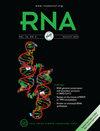Computational analysis of super-resolved in situ sequencing data reveals genes modified by immune-tumor contact events
IF 4.2
3区 生物学
Q2 BIOCHEMISTRY & MOLECULAR BIOLOGY
引用次数: 0
Abstract
Cancer cells can manipulate immune cells and escape from the immune system response. Quantifying the molecular changes that occur when an immune cell is touching a tumor cell can increase our understanding of the underlying mechanisms. Recently, it became possible to perform such measurements in situ, for example using expansion sequencing, which enabled in situ sequencing of genes with super-resolution. We systematically examined whether individual immune cells from specific cell types express genes differently when in physical proximity to individual tumor cells. First, we demonstrated that a dense mapping of genes in situ can be utilized for the segmentation of cell bodies in 3D, thus improving our ability to detect likely touching cells. Next, we utilized three different computational approaches to detect the molecular changes that are triggered by proximity: differential expression analysis, tree-based machine learning classifiers, and matrix factorization analysis. This systematic analysis revealed tens of genes, in specific cell types, whose expression separates immune cells that are proximal to tumor cells from those that are not proximal, with a significant overlap between the different detection methods. Remarkably, an order of magnitude more genes are trigger by proximity to tumor cells in CD8 T cells compared to CD4 T cells, in line with the ability of CD8 T cells to directly bind Major Histocompatibility Complex (MHC) Class I on tumor cells. Thus, in situ sequencing of an individual biopsy can be used to detect genes likely involved in immune-tumor cell-cell interactions. The data used in this manuscript and the code of the InSituSeg, Machine learning, cNMF and Moran’s I methods are publicly available at https://zenodo.org/record/7845775 (DOI: 10.5281/zenodo.7845775).对超分辨原位测序数据的计算分析揭示了免疫肿瘤接触事件改变的基因
癌细胞可以操纵免疫细胞,逃避免疫系统的反应。量化免疫细胞与肿瘤细胞接触时发生的分子变化,可以加深我们对其潜在机制的了解。最近,我们有可能在原位进行这种测量,例如利用扩增测序技术,以超分辨率对基因进行原位测序。我们系统地研究了特定细胞类型的单个免疫细胞在与单个肿瘤细胞物理接近时是否会以不同的方式表达基因。首先,我们证明了原位基因的密集图谱可用于三维细胞体的分割,从而提高我们检测可能接触细胞的能力。接下来,我们利用三种不同的计算方法来检测由接近引发的分子变化:差异表达分析、基于树的机器学习分类器和矩阵因式分解分析。这种系统性分析揭示了特定细胞类型中的数十个基因,这些基因的表达将与肿瘤细胞接近的免疫细胞与未接近的免疫细胞区分开来,不同的检测方法之间有显著的重叠。值得注意的是,与 CD4 T 细胞相比,CD8 T 细胞因接近肿瘤细胞而触发的基因要多出一个数量级,这与 CD8 T 细胞能直接与肿瘤细胞上的主要组织相容性复合物(MHC)I 类结合是一致的。因此,对个体活检进行原位测序可用于检测可能参与免疫-肿瘤细胞-细胞相互作用的基因。本稿件中使用的数据以及InSituSeg、机器学习、cNMF和Moran's I方法的代码可在https://zenodo.org/record/7845775(DOI: 10.5281/zenodo.7845775)上公开获取。
本文章由计算机程序翻译,如有差异,请以英文原文为准。
求助全文
约1分钟内获得全文
求助全文
来源期刊

RNA
生物-生化与分子生物学
CiteScore
8.30
自引率
2.20%
发文量
101
审稿时长
2.6 months
期刊介绍:
RNA is a monthly journal which provides rapid publication of significant original research in all areas of RNA structure and function in eukaryotic, prokaryotic, and viral systems. It covers a broad range of subjects in RNA research, including: structural analysis by biochemical or biophysical means; mRNA structure, function and biogenesis; alternative processing: cis-acting elements and trans-acting factors; ribosome structure and function; translational control; RNA catalysis; tRNA structure, function, biogenesis and identity; RNA editing; rRNA structure, function and biogenesis; RNA transport and localization; regulatory RNAs; large and small RNP structure, function and biogenesis; viral RNA metabolism; RNA stability and turnover; in vitro evolution; and RNA chemistry.
 求助内容:
求助内容: 应助结果提醒方式:
应助结果提醒方式:


